
eBook - ePub
88 Piano Classics for Beginners
David Dutkanicz
This is a test
Buch teilen
- 144 Seiten
- English
- ePUB (handyfreundlich)
- Über iOS und Android verfügbar
eBook - ePub
88 Piano Classics for Beginners
David Dutkanicz
Angaben zum Buch
Buchvorschau
Inhaltsverzeichnis
Quellenangaben
Über dieses Buch
Beginning pianists of all ages will cherish this excellent compilation of classics. Each piece was carefully selected and simplified to help students develop their skills. Many of the greatest composers—J. S. Bach, Beethoven, Brahms, Mendelssohn, Mozart, Rimsky-Korsakov, Rachmaninoff, Tchaikovsky, and others—are represented by several pieces each, some newly adapted for the piano. Composers and works not usually featured in beginner's books include pieces by Borodin, Gluck, Rameau, and Tallis.
Well-known classics include Bach's Brandenburg Concerto No. 3, Debussy's Claire de Lune, Moussorgsky's Pictures at an Exhibition, Satie's Gymnopedie No. 1, Schumann's Child Falling Asleep, and `Spring` from Vivaldi's Four Seasons. Several orchestral pieces have been newly adapted for the piano, including `Dance of the Swan` from Swan Lake, `Elephant` from Carnival of the Animals, `Largo` from Xerxes, and `Waltz of the Flowers` from The Nutcracker.
Well-known classics include Bach's Brandenburg Concerto No. 3, Debussy's Claire de Lune, Moussorgsky's Pictures at an Exhibition, Satie's Gymnopedie No. 1, Schumann's Child Falling Asleep, and `Spring` from Vivaldi's Four Seasons. Several orchestral pieces have been newly adapted for the piano, including `Dance of the Swan` from Swan Lake, `Elephant` from Carnival of the Animals, `Largo` from Xerxes, and `Waltz of the Flowers` from The Nutcracker.
Häufig gestellte Fragen
Wie kann ich mein Abo kündigen?
Gehe einfach zum Kontobereich in den Einstellungen und klicke auf „Abo kündigen“ – ganz einfach. Nachdem du gekündigt hast, bleibt deine Mitgliedschaft für den verbleibenden Abozeitraum, den du bereits bezahlt hast, aktiv. Mehr Informationen hier.
(Wie) Kann ich Bücher herunterladen?
Derzeit stehen all unsere auf Mobilgeräte reagierenden ePub-Bücher zum Download über die App zur Verfügung. Die meisten unserer PDFs stehen ebenfalls zum Download bereit; wir arbeiten daran, auch die übrigen PDFs zum Download anzubieten, bei denen dies aktuell noch nicht möglich ist. Weitere Informationen hier.
Welcher Unterschied besteht bei den Preisen zwischen den Aboplänen?
Mit beiden Aboplänen erhältst du vollen Zugang zur Bibliothek und allen Funktionen von Perlego. Die einzigen Unterschiede bestehen im Preis und dem Abozeitraum: Mit dem Jahresabo sparst du auf 12 Monate gerechnet im Vergleich zum Monatsabo rund 30 %.
Was ist Perlego?
Wir sind ein Online-Abodienst für Lehrbücher, bei dem du für weniger als den Preis eines einzelnen Buches pro Monat Zugang zu einer ganzen Online-Bibliothek erhältst. Mit über 1 Million Büchern zu über 1.000 verschiedenen Themen haben wir bestimmt alles, was du brauchst! Weitere Informationen hier.
Unterstützt Perlego Text-zu-Sprache?
Achte auf das Symbol zum Vorlesen in deinem nächsten Buch, um zu sehen, ob du es dir auch anhören kannst. Bei diesem Tool wird dir Text laut vorgelesen, wobei der Text beim Vorlesen auch grafisch hervorgehoben wird. Du kannst das Vorlesen jederzeit anhalten, beschleunigen und verlangsamen. Weitere Informationen hier.
Ist 88 Piano Classics for Beginners als Online-PDF/ePub verfügbar?
Ja, du hast Zugang zu 88 Piano Classics for Beginners von David Dutkanicz im PDF- und/oder ePub-Format sowie zu anderen beliebten Büchern aus Media & Performing Arts & Classical Music. Aus unserem Katalog stehen dir über 1 Million Bücher zur Verfügung.
Information
Thema
Classical MusicCarl Philip Emmanuel Bach
1714–1788
Solfegietto
Carl Philipp Emanuel was the son of the monumental Johann Sebastian Bach. He and his other brothers—Johann Christian, Wilhelm Friedemann, and Johann Christoph Friedrich—all inherited their father’s wonderful talent and were musically famous in their own right. In this work, be mindful of the dialogue between the two hands, and use the “borrowed” fingerings (written above the left hand) to ease some passages.
Moderato
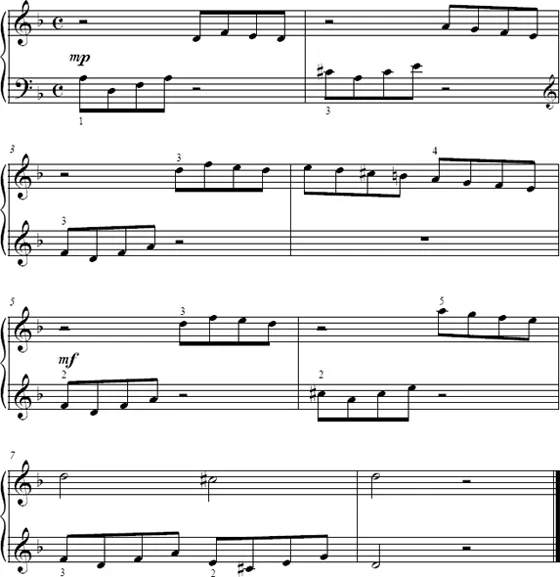
Johann Sebastian Bach
1685–1750
Arioso in G
An arioso is a short piece, usually found in a cantata, where a story is sung by a solo singer. Keep the slow Largo tempo consistent, and try to shape the phrases as a singer would.
Largo
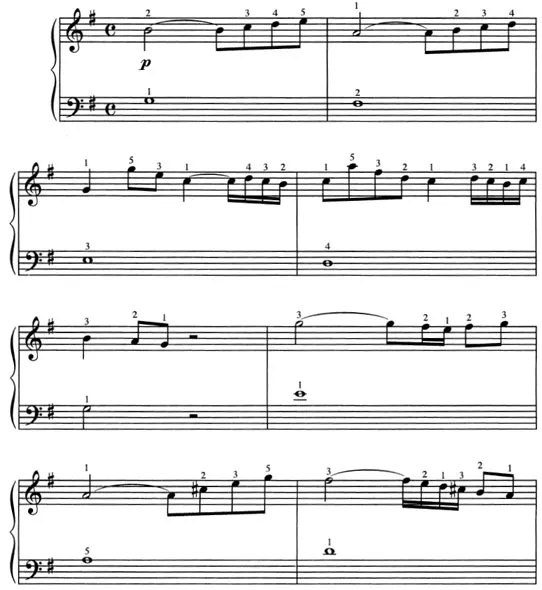
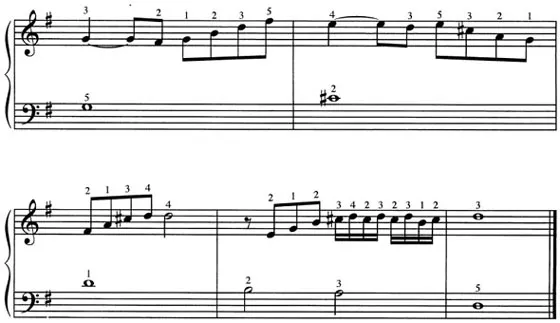
Johann Sebastian Bach
1685–1750
Affetuoso from Brandenburg Concerto No. 5
Bach composed six magnificent concertos for the Prince of Brandenburg. This melody is the opening of the second movement of the fifth. It is marked as affetuoso, meaning “affectionate.”
Moderato

Johann Sebastian Bach
1685–1750
Brandenburg Concerto No. 3 (opening)
This excerpt from the Brandenburg Concertos opens with a dialogue between the right and left hand. Keep the tempo steady so that the melody is uninterrupted. Also, use the left thumb on the repeated Ds to ease the right hand.
Moderato
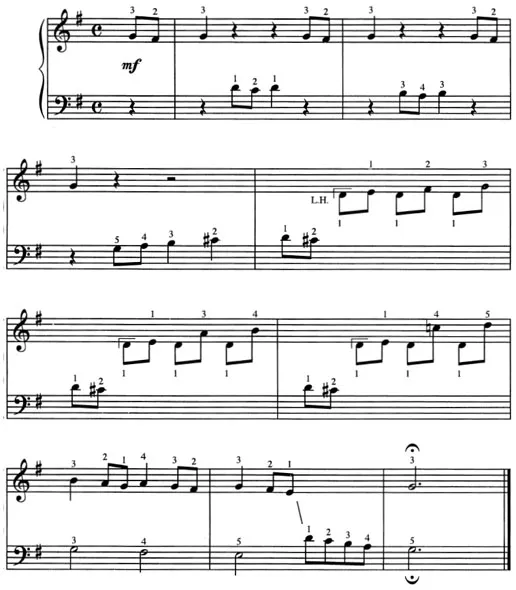
Johann Sebastian Bach
1685–1750
Menuet from Anna Magdalena’s Notebook
This charming piece was found in a notebook of music Bach had written for his wife, Anna Magdalena. Some of the pieces were for teaching, but most were small gifts. Keep the mood merry and light.
Andante
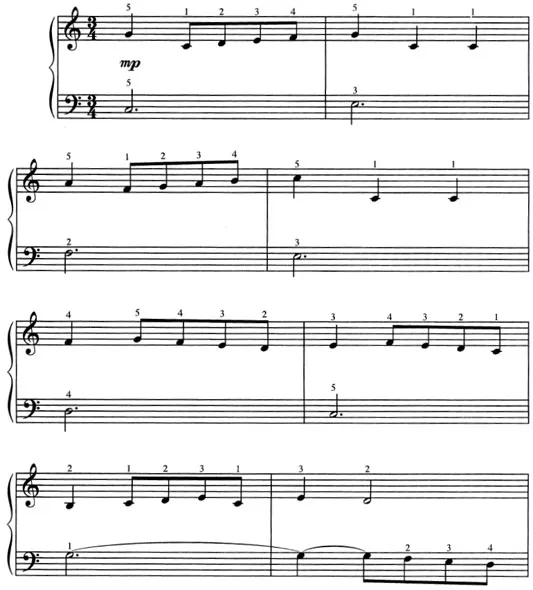
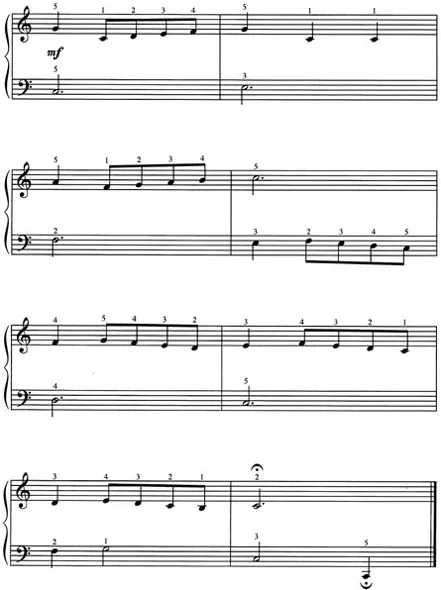
Johann Sebastian Bach
1685–1750
Invention in A Minor
Just like the other Inventions, this one was written to instruct new pupils. Here, Bach presents a challenging arpeggio workout. The music should flow evenly, helped by smoothness in the wrist and fingers.
Moderato
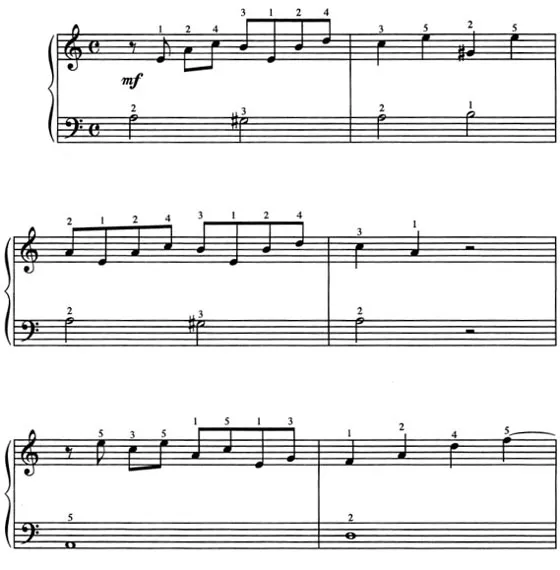
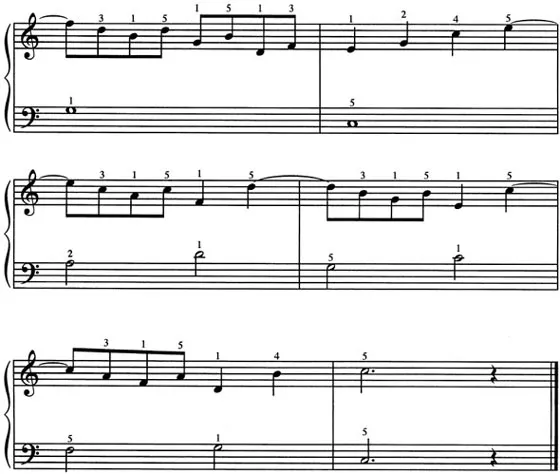
Johann Sebastian Bach
1685–1750
Wachet Auf (“Sleepers Awake”)
This wonderful melody is taken from a church, and translates into “Sleepers Awake.” Keep a firm hold on the tempo – don’t let the dips in melody slow you down. For the full effect, use dynamics to contrast different moods.
Calm and Steady
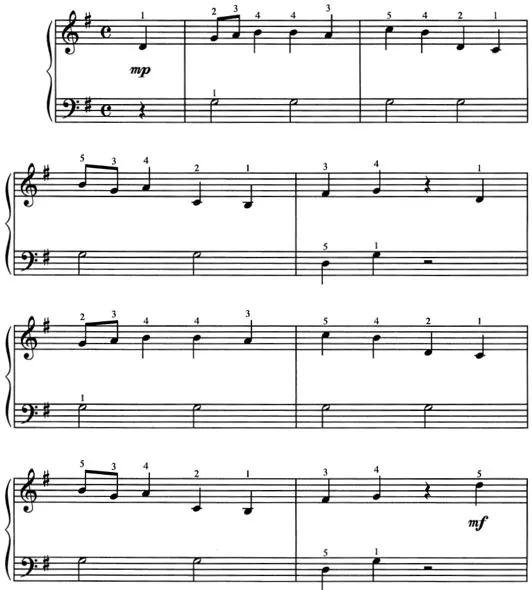

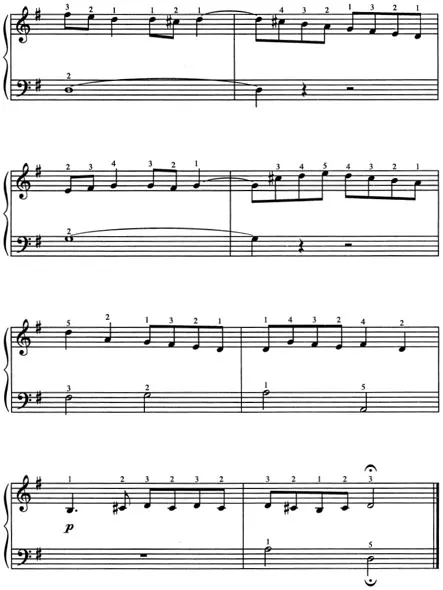
Ludwig van Beethoven
(1770–1827)
Symphony No. 3 (theme)
Symphony No. 3 is nicknamed the “Eroica.” It was written to honor “heroes” and was originally dedicated to Napoleon Bonaparte. Play the melody in a crisp manner, as if it were a military march.
Allegretto
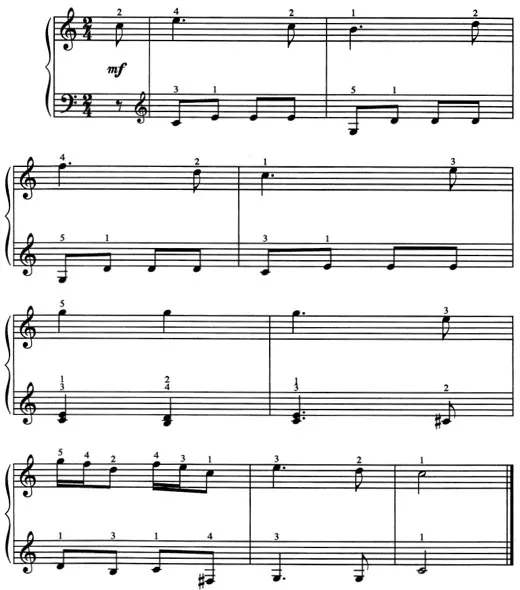
Ludwig van Beethoven
(1770–1827)
Adagio Cantabile from Sonata No. 8
This famous piece is the opening to the second movement of the Piano Sonata No. 8, which is also kno...